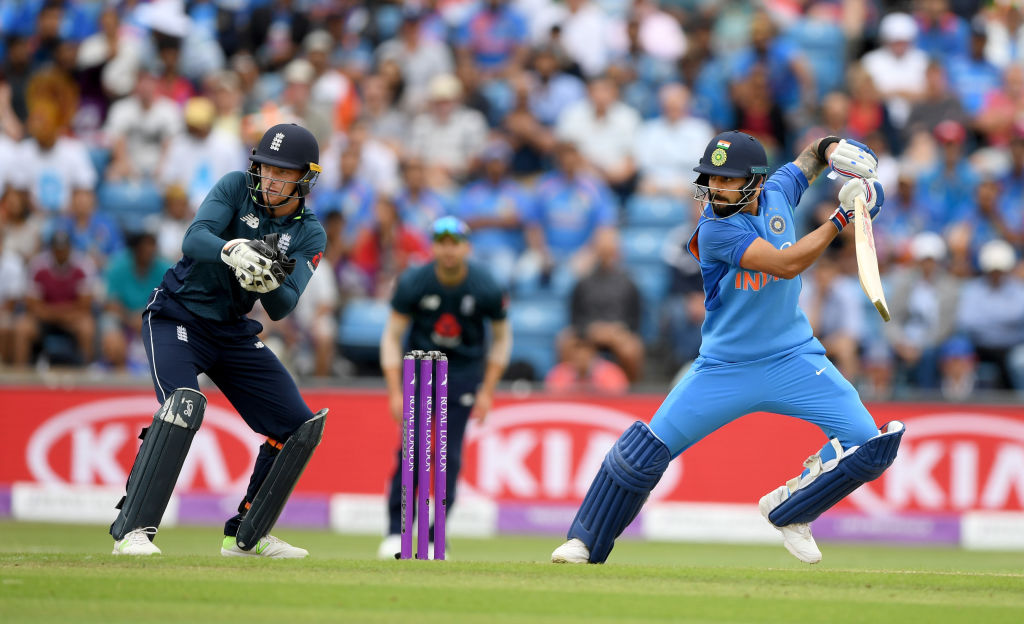India must answer tough questions ahead of upcoming World Cup

Getty
The World Cup is less than a year away and it all seemed hunky dory for the Indian team with all its bases covered as the Indian dressing room is a place you want to be in now. The World Cup favorites and the only dressing room to have two world-class wrist spinners.
If and only if, the last series wouldn’t have happened. After the recently-concluded ODI series, there is an awkward silence among everyone. India's batting order unravelled with two consecutive pedestrian displays, their bowlers showed they are not a finished article yet, their fielders were lacklustre on the field, and after a batting reinvention in the Indian Premier League, the “best finisher in the world” played two innings of such vulnerability that could make any kid frustrated to ever watch the game.
One of the prime factors behind India’s dominance in the ODI cricket lately is their batting triumvirate Virat Kohli, Rohit Sharma, and Shikhar Dhawan, are the 1st, 3rd and 13th leading scorers in the 50-over format of the game since the last World Cup in Australia. Most importantly, they provide a rough aggregate of 190 runs in any given match and it almost made the
Consider the last ODI for example. Rohit failed to make any sort of contribution. Dhawan yet again failed to convert the powerful start to a big one and expecting Kohli to score a century in all the run chases is unfair too. He is human after all. It was a chance for the likes of Dinesh Karthik, Suresh Raina, and MS Dhoni to step up, but as it turned out they failed terribly in their pursuit.
Compare that to England - India’s major World Cup threat. While the English team have batted seven players five or more times in the middle order from (No. 4 to No. 7), Every player in the team knows their role and what they add to the table, unlike the musical chair that the Indian middle-order has come out to be. India's batting order ends with Hardik Pandya at No. 7 and now, Kohli sticking to No. 3, the onus is always going to be on the middle order in case he and the openers fail to make an impact in the game. But, the saddest part is, unlike England, India don’t have a settled middle-order

 ©Sportscafe
©SportscafeWhile the No. 4 conundrum has been repeated so many times to be told here, another problem that has come to be a big concern is MS Dhoni. Of course, Dhoni is invaluable behind the stumps and still the first person Kohli runs to when he needs any advice or how to operate with the spinners. What Dhoni does on the field - either good or bad - that sets the tongues wagging, but recently, it is for all the wrong reasons. While Dhoni's reputation as a finisher was on a downward spiral since late 2015, he believed that he had more to give and IPL was his way to shine and shut up the world for good. But a 59-ball 37 in London and a 66-ball 42 in Leeds, when a bit of acceleration could've got India closer to a defendable target, shows there are problems and it is not a small one.
However, it was not the batting that is the biggest concern for India. A pacer’s occupational hazard - injury - can occur anytime and India learned that the hard way when they had to completely rely on Umesh Yadav, Deepak Chahar, Siddarth Kaul, and Shardul Thakur and none of them came out to be an effective option. While England scored runs like anything in the powerplay overs, India’s seamers were more expensive than their English counterparts in the death overs, with an economy rate of 8.25
The series was a lesson in disguise for India. All these issues will finally give the ever-so-energized pair of Virat Kohli and Ravi Shastri to sit down for introspection. Given Indian middle-order was purely untested before this, the Indian team was in a good headspace. As the adage goes, success can sometimes be the worst enemy and this failure may force the Indian team management to work on the chinks, sooner than later. After all, the World Cup is just 10 months away and sorting out the chinks will help Indian team stake their claim for the upcoming World Cup with more energy.
TNPL கிரிக்கெட் கேம் ஆடுங்க. தினசரி பரிசு வெல்லுங்க!
Play & Win Today! Click here here to download Nostra Pro & get ₹40 Joining Bonus!
Predict Matches & Win Cash!! Play NostraGamus on Android - predict ANY Sport & win upto ₹10 Lakhs! Click here to Download & Get ₹40 Cash Bonus!
